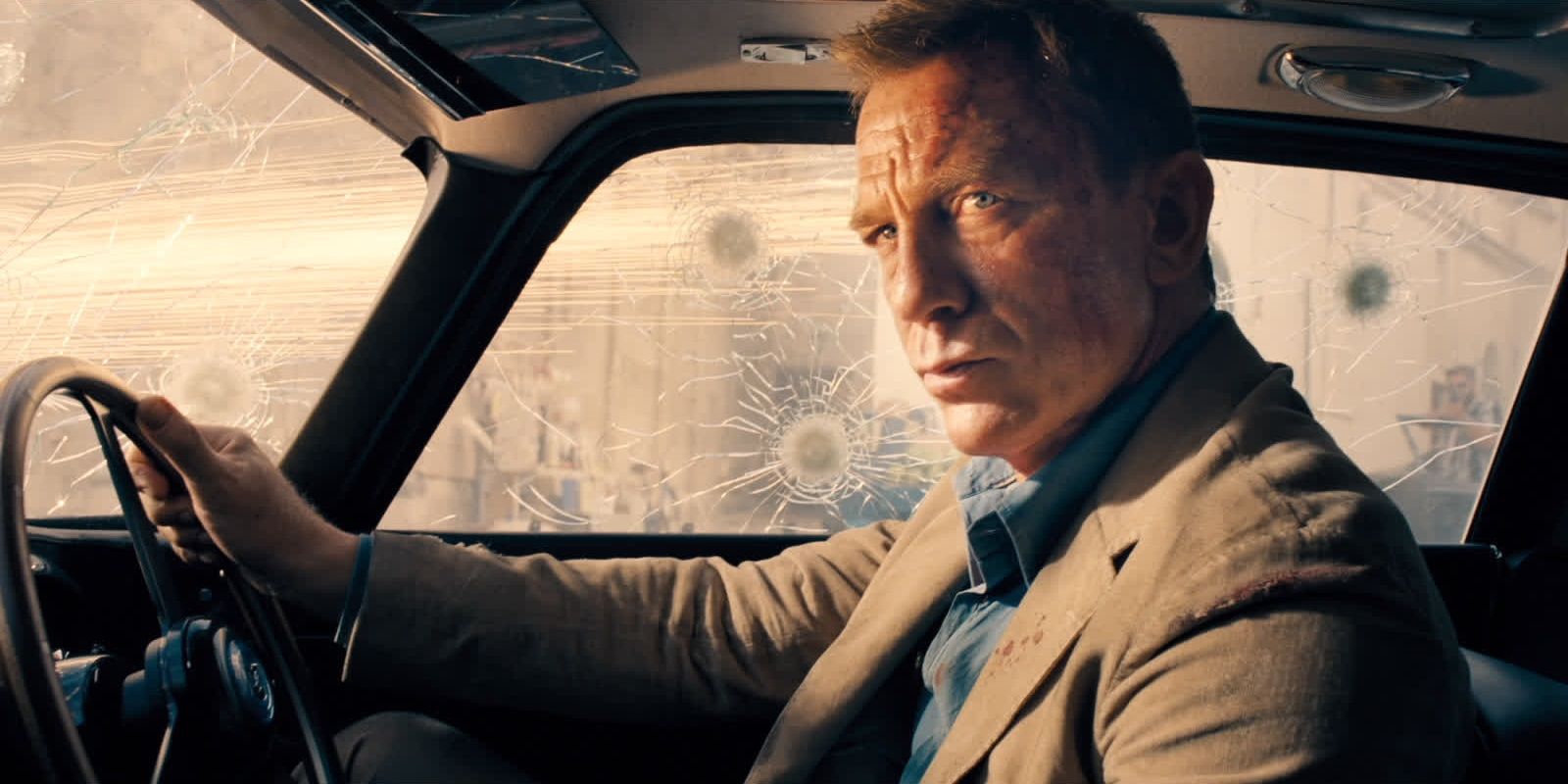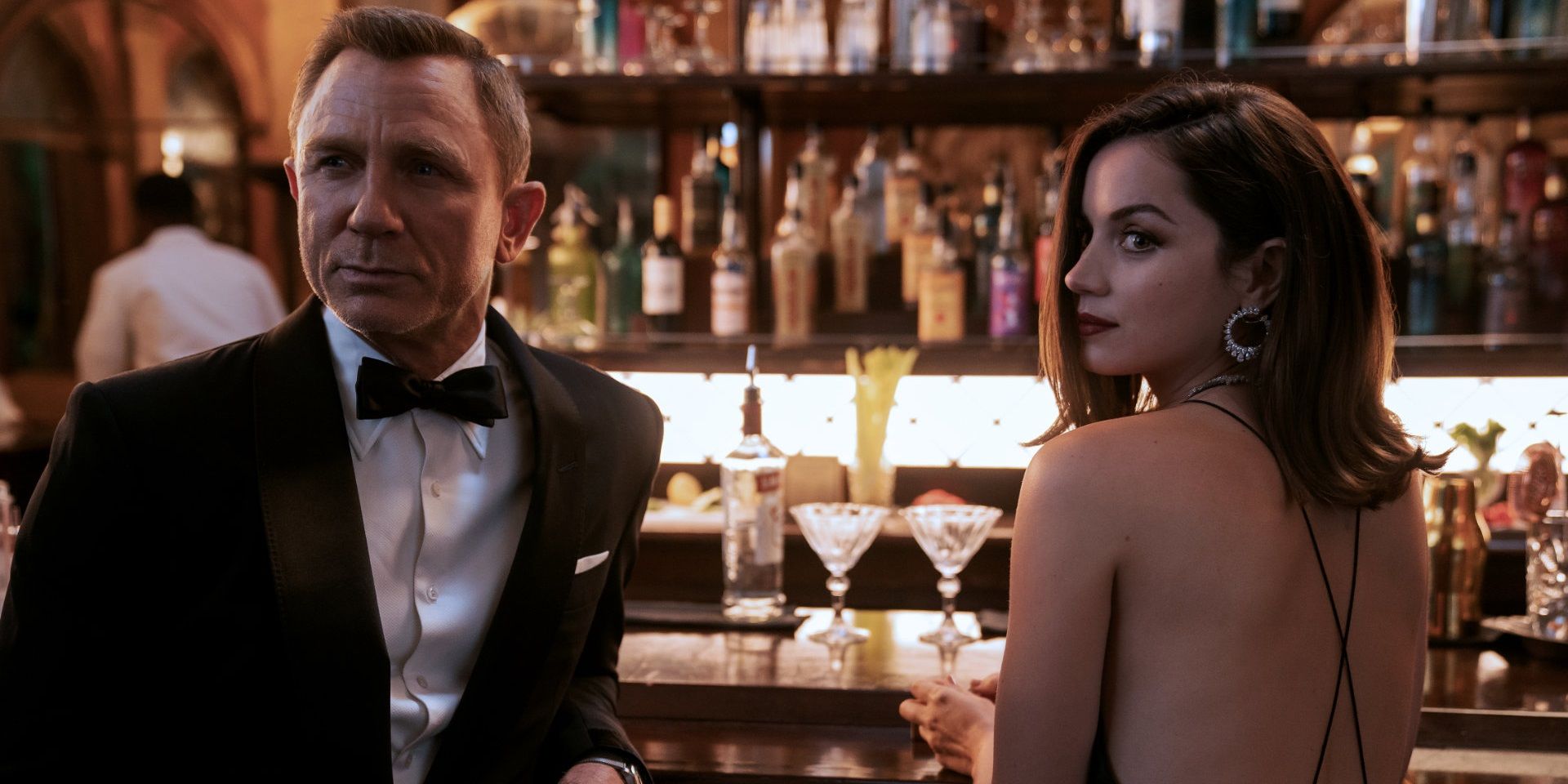This is a spoiler-free review.
Daniel Craig’s fifth and final outing in the role of James Bond, No Time to Die, has been delayed for over a year to accommodate the coronavirus pandemic. Now, it’s finally here, and with breathtaking action scenes, surprising emotional heft, and Craig’s finest dramatic performance in the role, against all odds, No Time to Die is worth the wait.
It’s easily the actor’s best 007 movie since Casino Royale. It doesn’t have the generic action of Quantum of Solace, the distracting plot holes of Skyfall, or the muddled serialization of Spectre. It has the grit and emotional weight of Casino Royale without losing any of the series’ classic sense of fun and excitement.
RELATED: MGM Unveils The Final Trailer For No Time To Die
There was a minor controversy when it was announced that No Time to Die would be the longest Bond movie ever made at 163 minutes. That’s nearly three hours long, which is risky for an action-packed spy thriller and not an Oscar-baity historical epic. But thanks to director Cary Joji Fukunaga’s masterful command of pacing, No Time to Die justifies its runtime. There’s never a lull or an exposition scene that drags, and there’s always a visceral set-piece right around the corner.

The script – penned by Fukunaga, Bond regulars Neal Purvis and Robert Wade, and Fleabag’s Phoebe Waller-Bridge – is a beautiful balancing act of disparate tones. The quips are hilarious, the action sequences are thrilling, the dramatic scenes land (a rarity for this franchise), and the villain and his flesh-eating bioweapon are straight out of a horror movie. All these tonal shifts shouldn’t work in the same movie, but Fukunaga makes it work by focusing solely on Bond’s character and his journey.
Ultimately, the most important aspect of Bond movies – and the reason audiences show up in droves to see them – is their action. No Time to Die has a nice, wide variety of riveting action sequences: car chases, shootouts, brutal hand-to-hand combat. Cinematographer Linus Sandgren uses the perfect shots to frame each action scene. Dizzying aerial shots capture high-octane vehicular carnage and tight close-ups capture ruthless fistfights.

Craig bows out his stretch of the Bond franchise with one of the strongest performances ever given in the role. He continues to nail the character’s coolness in moments like frisbeeing a waiter’s tray to incapacitate a suspect and then finishing the drink that was on it, but he also brings plenty of emotional resonance to the proceedings. Bond has a real arc in this movie, taking stock of what’s important in his life as his journey comes to an end, and Craig plays every step of that arc with pitch-perfect pathos.
While Craig undoubtedly gives the strongest performance in the movie, he’s backed up by strong support from both returning castmates and exciting newcomers. Familiar faces like Naomie Harris’ Moneypenny and Ben Whishaw’s Q are more comfortably settled into their roles than ever. Ana de Armas makes a brief but memorable appearance as Paloma, an endearingly reckless CIA agent who helps out Bond, while Billy Magnussen gives an amusing turn as Logan Ash, another CIA agent who smiles too much. The standout of the new supporting cast, though, is Lashana Lynch as Nomi, the new 007, who is both just as hypercompetent as her predecessor and relatably human. Lynch doesn’t try to play Nomi as the new Bond; she rounds her out as a compelling character in her own right. Her hilariously biting back-and-forth barbing with Bond gives the movie’s action a mismatched “buddy cop” angle.

Rami Malek is the latest Oscar winner to take on 007, after Javier Bardem and Christoph Waltz, and he makes for a quintessential Bond villain in the role of vengeful terrorist Safin. Most Bond villain actors feel the need to ham it up, but Malek’s performance is refreshingly understated. Safin is a menacing presence whenever he appears on-screen and, like all great Bond villains, he’s a fun foil for 007.
Since Bond movies are traditionally standalone episodic adventures that don’t acknowledge the previous installment or set up the next one, Spectre’s attempt to pull all of Craig’s movies together in a retroactively serialized narrative was met with a mixed response. No Time to Die maintains the shared continuity of Spectre, bringing back Léa Seydoux’s Dr. Madeleine Swann and Christoph Waltz’s Blofeld, but it works a lot better here. Unlike in Spectre, No Time to Die’s serialization isn’t just aimless MCU-inspired worldbuilding; it resolves the ongoing narrative in a surprisingly satisfying way.

As a globetrotting adventure following 007’s attempts to track down a megalomaniacal villain’s lair and put an end to their grandiose, apocalyptic plans, No Time to Die is a welcome return to the classic Bond structure. It does little to innovate the 007 formula, but it is a great example of it and the movie’s sense of finality provides a fitting farewell for Craig’s Bond.
Usually, Bond actors are replaced when they burn out and their last movie is the first one to fail critically or commercially. Craig is the first Bond actor whose final movie actually feels like a grand finale, and it doesn’t disappoint.
MORE: James Bond Fans Don't Need To Worry So Much About The Amazon Deal

